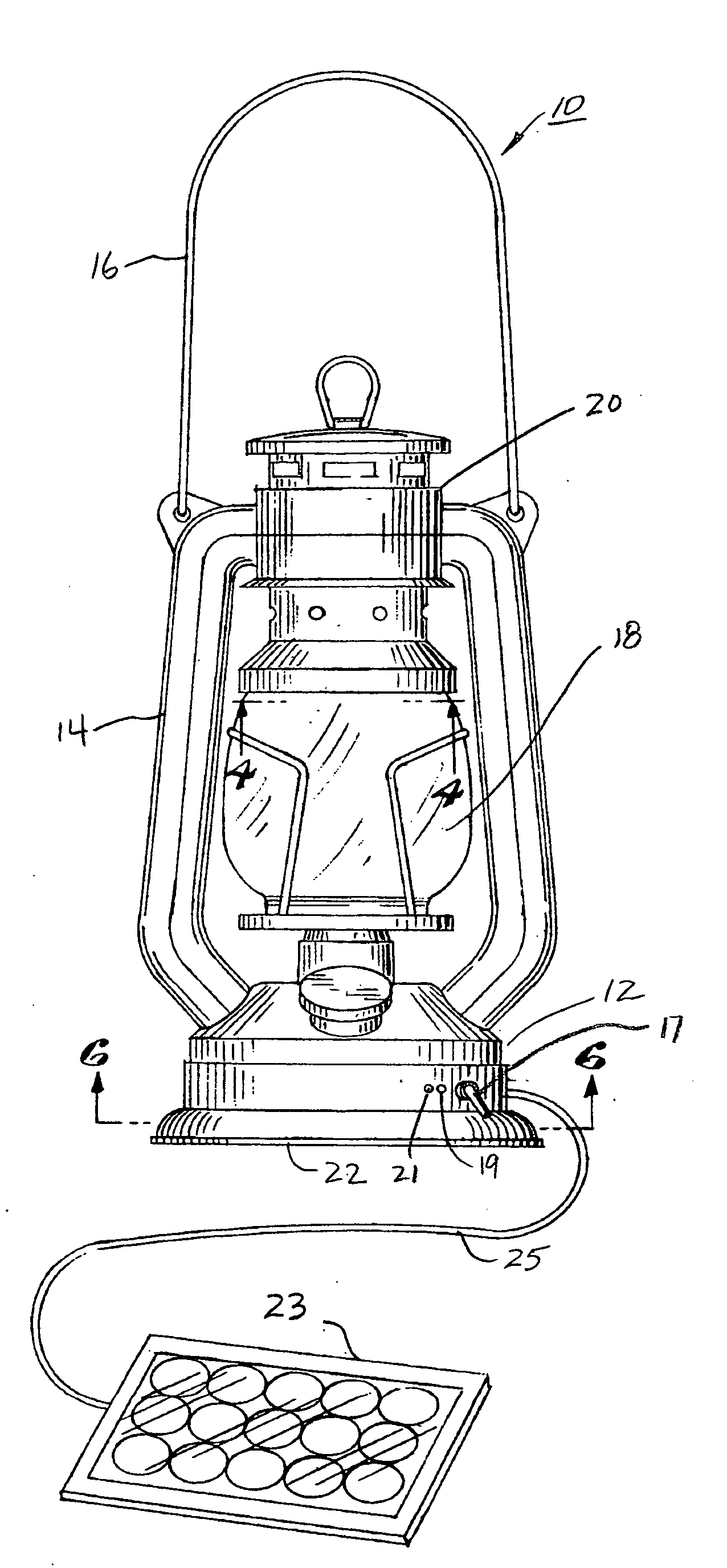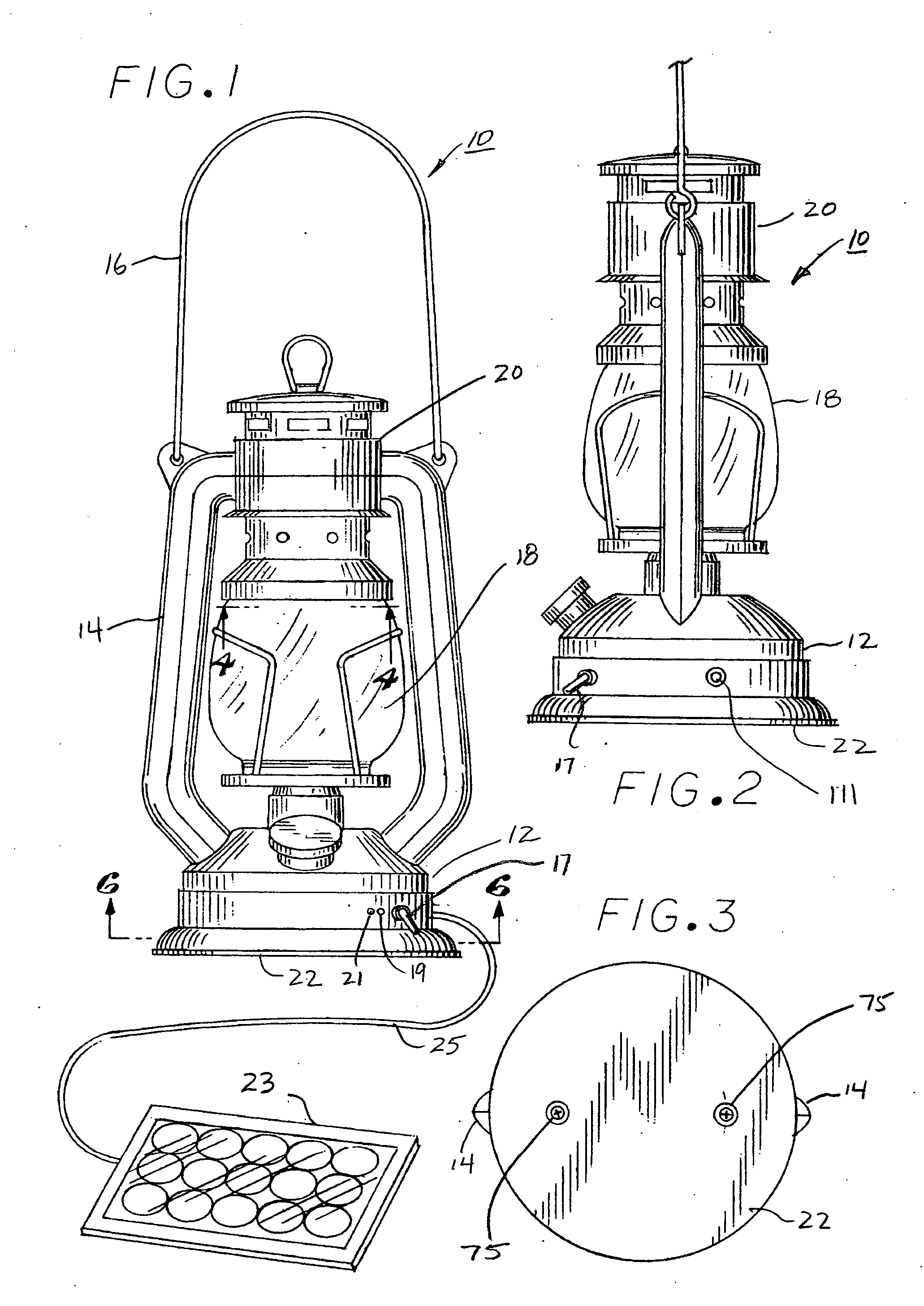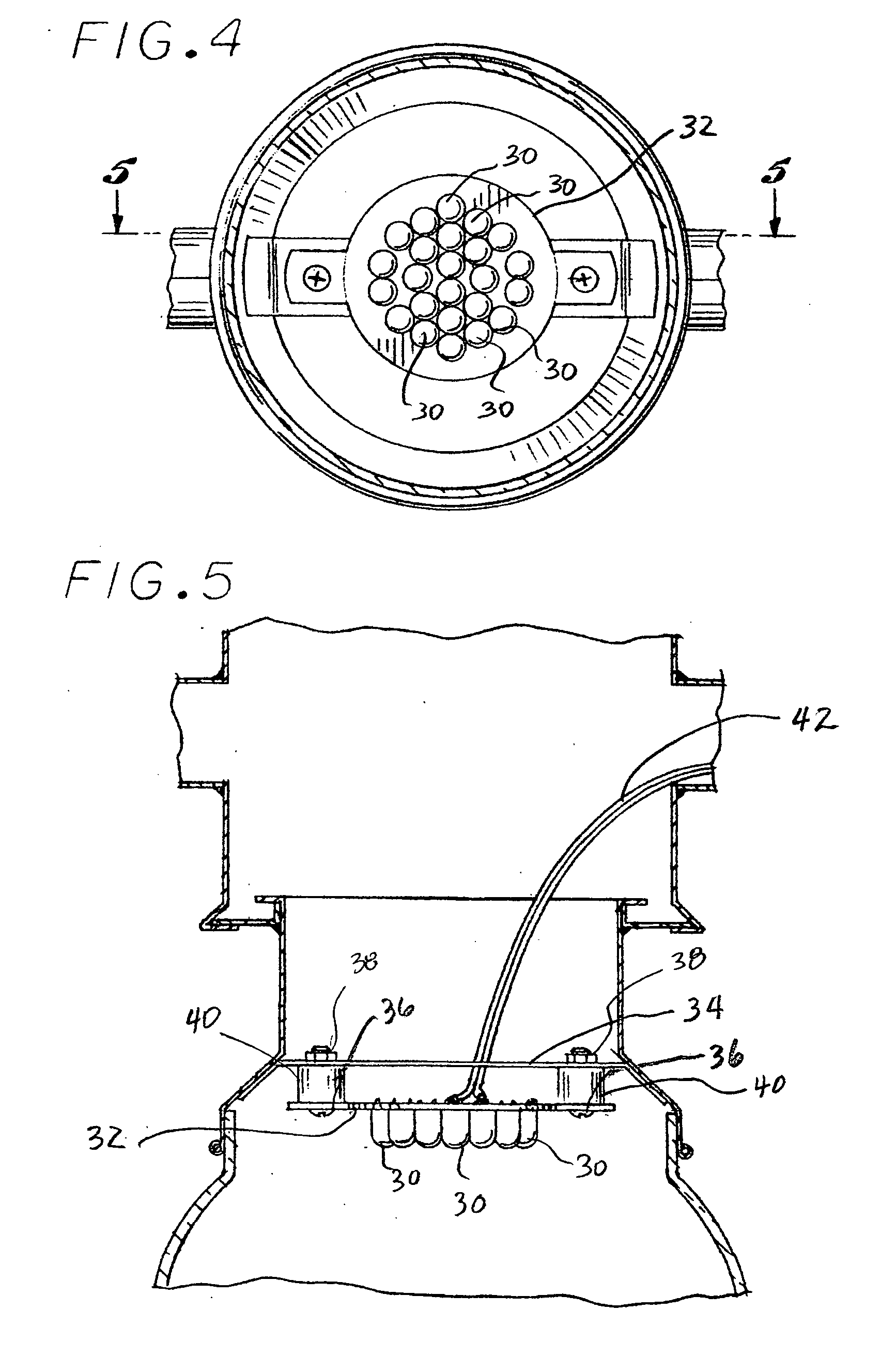Lantern using LEDs and rechargeable solar panel
a solar panel and led light technology, applied in the field of solar rechargeable lanterns, can solve the problems of shortening the life of the battery, and affecting the charge capacity of the battery
- Summary
- Abstract
- Description
- Claims
- Application Information
AI Technical Summary
Benefits of technology
Problems solved by technology
Method used
Image
Examples
Embodiment Construction
[0023]Referring new to FIGS. 1-3, the modified solar lantern 10 of the present invention is illustrated. Lantern 10 comprises a base portion 12, support structure 14, handle 16, switch 17, transparent envelope 18, and cover portion 20 and bottom surface 22. In addition, solar panel 23 is coupled to base portion 12 via lead 25 when the lantern battery is to be recharged. Although not shown in FIG. 2, lead 25 enters base portion 12 through connector / switch 111. Lantern 10 is conventional except for the modifications set forth in FIGS. 4-9 as will now be described. In particular, FIGS. 4 and 5 illustrate a plurality of light emitting diodes (LEDs) 30 supported on printed circuit board (PCB) 32. PCB 32 in turn is mounted to base plate 34 via screws 36 and nuts 38. Spacers 40 separate PCB 32 from plate 34. Cable 42 couples the power from battery pack 60 (FIG. 9) to the PCB 32 which, in turn, provides power to the LEDs 30.
[0024]When lantern 10 is ready for use, switch 17 is moved either t...
PUM
 Login to View More
Login to View More Abstract
Description
Claims
Application Information
 Login to View More
Login to View More - R&D
- Intellectual Property
- Life Sciences
- Materials
- Tech Scout
- Unparalleled Data Quality
- Higher Quality Content
- 60% Fewer Hallucinations
Browse by: Latest US Patents, China's latest patents, Technical Efficacy Thesaurus, Application Domain, Technology Topic, Popular Technical Reports.
© 2025 PatSnap. All rights reserved.Legal|Privacy policy|Modern Slavery Act Transparency Statement|Sitemap|About US| Contact US: help@patsnap.com



